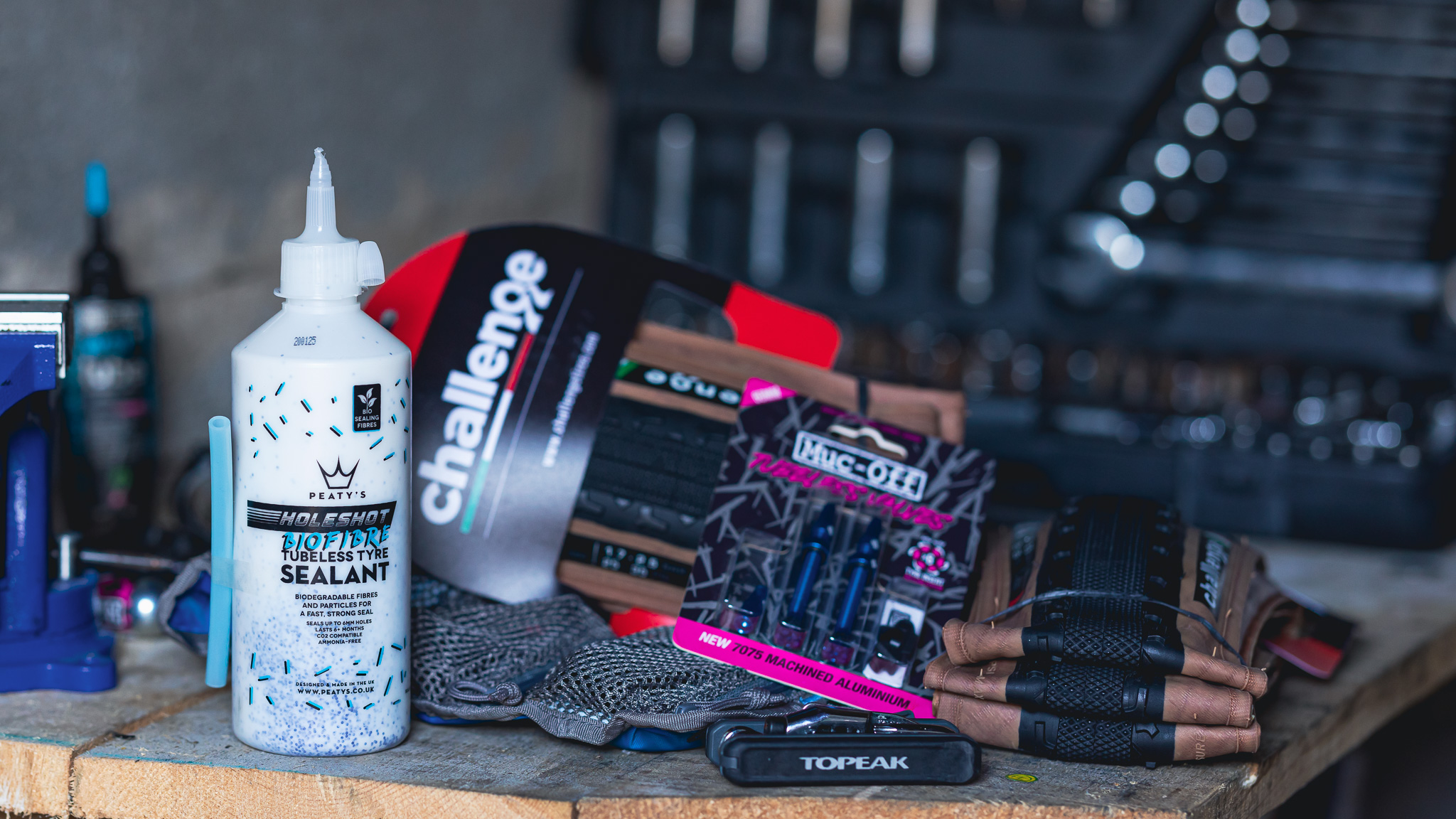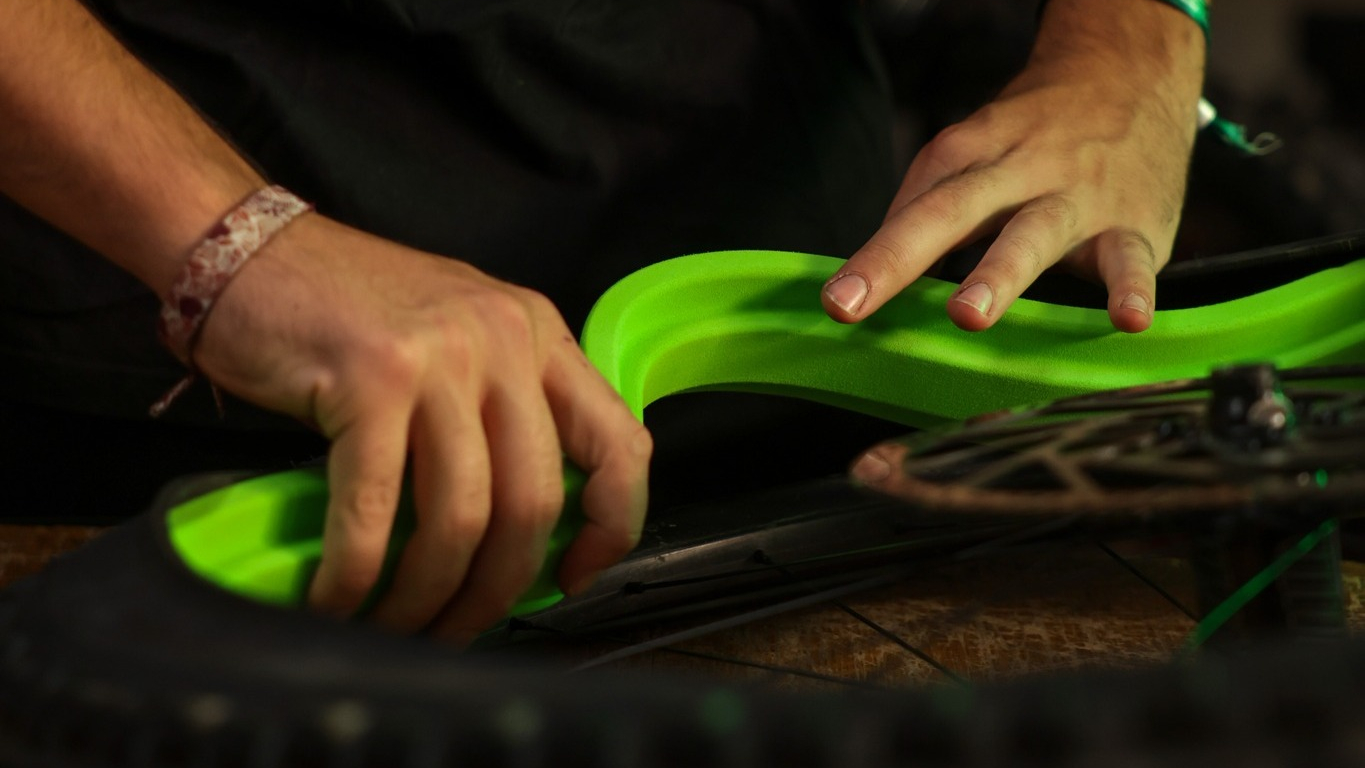Five essential tips that will give you the perfect MTB tire setup
Tires are your sole contact between you and the ground. Seasoned bike tester, Graham Cottingham explains how to set them up for the best performance

Other than occasionally checking the pressures, truthfully, how many of us set time aside to make sure we have set up our tires properly? Whether it's due to time restraints, slackness, or being unaware of the lost potential, we are all guilty of just pumping our tires up so we can get out on the bike. However, you could be missing out on a load of untapped performance that could genuinely make your riding faster, more comfortable, and more fun.
Having the best MTB tires is a good start and I have already gone into deep depths about how to choose the right tires for your riding. Now you have your tires, let's dig into how you can set them up for maximum performance out on the trail.

1. Go tubeless
It's 2024, so presumably everyone reading this is already a tubeless convert. If you haven't ditched tubes yet, what are you waiting for?
Setting your tires up tubeless is easily one of the best MTB upgrades you can do as it offers a load of advantages with very few disadvantages. Firstly, almost all MTB rims and tires are tubeless compatible and, while there are still one or two tricky tire/rim combos, most are very easy to set up. If you haven’t set up tubeless tires before, check out our how to setup tubeless bike tires guide for everything you need to know.
Out on the trail, tubeless tires can be run at considerably lower tire pressures for better grip and comfort, plus the sealant inside will repair small punctures too. They do require a pre-ride pressure check and an occasional refresh to ensure sealant is still sloshing around, but these are small prices to pay considering the performance gains.

2. Tire pressures
Tire pressure plays a huge part in how a tire performs out on the trail. Firmer tires will roll faster, give more support, and resist punctures better while softer tires massively boost grip and comfort.
Finding the correct pressures is a tricky balancing act and requires tire/rim width, rider weight, speed, terrain, and personal preference to be considered. Lighter riders, wider tires, and slower, smoother, and wetter trails can all benefit from lower pressures, whereas rough terrain and faster and/or heavier riders will need some extra support.
Front and rear tires are often set up with differing pressures as well. Generally, experienced riders will run up to 5psi less in the front tire to improve the cornering grip and give more support to the rear tire as it is usually subjected to harsher impacts.
Several brands offer a calculator to help calculate the best tire pressure for your riding. SRAM has a tire pressure calculator which will give a good starting point for experimenting, although I found the suggestions were a little higher than I would choose for my riding. Schwalbe also has its tire pressure calculator, and although it caters directly to Schwalbe’s tire range, I found picking an equivalent casing gave good results.
However, there is no ‘correct’ tire pressure as it's often subjective, the good news is experimenting with tire pressure requires no more than a bike pump and a little patience.

3. Choose the right sealant
Speaking of sloshing sealant, there are a few different things to consider when choosing the best sealant for your riding.
Sealant isn’t going to necessarily make any discernible difference to the ride quality of your bike, however, where you ride and how often you are willing to refresh your sealant should be factored in.
Although different brands will boast different properties, sealant falls into three loose categories; race, regular, and endurance. The main difference between these is the balancing of sealing performance to longevity. Race-orientated sealants usually contain more particulates (material within the sealant to promote hole sealing) which increase sealing power, plugging bigger holes more effectively and blocking up smaller punctures faster. On the other hand, endurance sealants have fewer particulates which stops the sealant solidifying inside the tire and increases the intervals between cleaning out and replacing the old sealant.
The temperature you ride in will also have an effect, although unless you're riding in extreme heat or cold, regular sealants should be fine. If in doubt, most brands will state ideal operating temperatures.

4. Tire inserts
Tire inserts started life in downhill racing – the rugged, one-and-done nature of a race run meant that inserts became popular upgrade. Nowadays, inserts are used in most MTB disciplines and are even making their way to gravel as well.
Inserts come in a variety of forms although they fall into two categories – rim protection or performance enhancing. Lighter inserts that ‘float’ inside the tire generally only offer a cushioning layer between the tire and rim and will help reduce pinch punctures and rim dings. Larger volume inserts that sit within the rim bed will offer protection but also support the tire side walls and give the tire a more controlled feel.
If you opt for a performance-enhancing Insert, it can have several effects on how you set up your tires and how they feel out on the trial as well. Inserts not only allow you to ride lower pressures as they protect the rim from impacts and support the sidewall in big compressions and corners, but they also reduce the air volume in the tire. This can give tires a damped feel by absorbing small vibrations and reducing bouncing in rough sections.
They aren't perfect though, inserts add weight which can be very noticeable when riding. The fitting process can be tricky too and although they protect against punctures, if you get a flat that requires a tube you're stuck with a sealant-covered insert to carry around. Some inserts will allow you to ride on a flat tire, it's not ideal but it's often enough to finish a race run or limp back to your car.
Don’t forget that if you decide to invest in tire inserts, it's recommended to upgrade your tubeless valves to insert compatible models as inserts can block standard valve holes.

5. Replace regularly
I don’t need to tell you that a worn tire isn’t going to grip as well as a fresh tire, but it's very easy to be tempted to get a few more miles, or simply forget to check. It's worth inspecting your tires regularly, checking your tires for dulled and rounded-off tread, damage to the lugs, and small tears to the outer layer that could develop into something worse.
Replacing tires is particularly important if they have a multi-layered compound construction. These tires usually have a softer outer layer and a harder under layer, once the grippy layer wears away the tire will become considerably less effective.
Don't fall into the the trope that a worn tire will be faster either, I have always found that a fresh tire rolls faster than a tire that needs to be replaced.
As for disposing of your used tires, Schwalbe are running tire and inner tube recycling in many areas in the US, UK, and EU – though there are far less tire recycling options than tube. You can find your nearest one at schwalbe.com. In the UK you can also recycle bike tires with Velorim, find your nearest recycling point at velorim.co.uk

Graham Cottingham joined the BikePerfect team as our senior tech writer in 2020. With over 20 years of riding experience, he has dabbled in downhill, enduro, and gravel racing. Not afraid of a challenge, Graham has embraced bikepacking over the last few years and likes nothing more than strapping some bags to his bike and covering big miles to explore Scotland's wildernesses. When he isn’t shredding the gnar in the Tweed Valley, sleeping in bushes, or tinkering with bikes, he is writing tech reviews for BikePerfect.
Rides: Cotic SolarisMax, Stooge MK4, 24 Bicycles Le Toy 3, Surly Steamroller
Height: 177cm
Weight: 71kg
